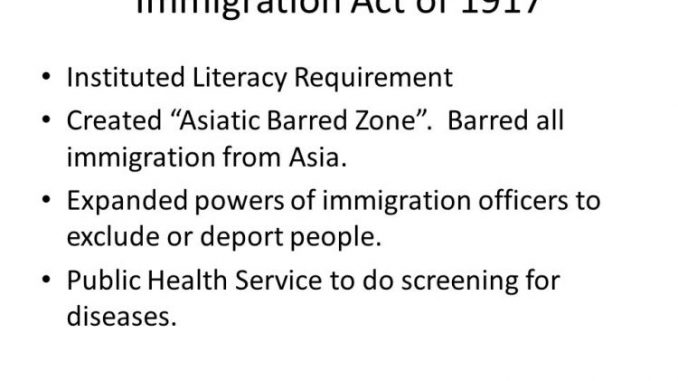
On This Day, February 5th in 1917, With more than a two-thirds majority, Congress overrides President Woodrow Wilson’s veto of the previous week and passes the Immigration Act. The law required a literacy test for immigrants and barred Asiatic laborers, except for those from countries with special treaties or agreements with the United States, such as the Philippines.
During the late 19th and early 20th centuries, the United States received a majority of the world’s immigrants, with 1.3 million immigrants passing through New York’s Ellis Island in 1907 alone. Various restrictions had been applied against immigrants since the 1890s, but most of those seeking entrance into the United States were accepted.
However, in 1894, the Immigration Restriction League was founded in Boston and subsequently petitioned the U.S. government to legislate that immigrants be required to demonstrate literacy in some language before being accepted. The organization hoped to quell the recent surge of lower-class immigrants from Southern and Eastern Europe. Congress passed a literacy bill in 1897, but President Grover Cleveland vetoed it. In early 1917, with America’s entrance into World War I three months away, xenophobia was at a new high, and a bill restricting immigration was passed over President Wilson’s veto.
Subsequent immigration to the United States sharply declined, and, in 1924 a law was passed requiring immigrant inspection in countries of origin, leading to the closure of Ellis Island and other major immigrant processing centers. Between 1892 and 1924, some 16 million people successfully immigrated to the United States to seek a better life.



Be the first to comment